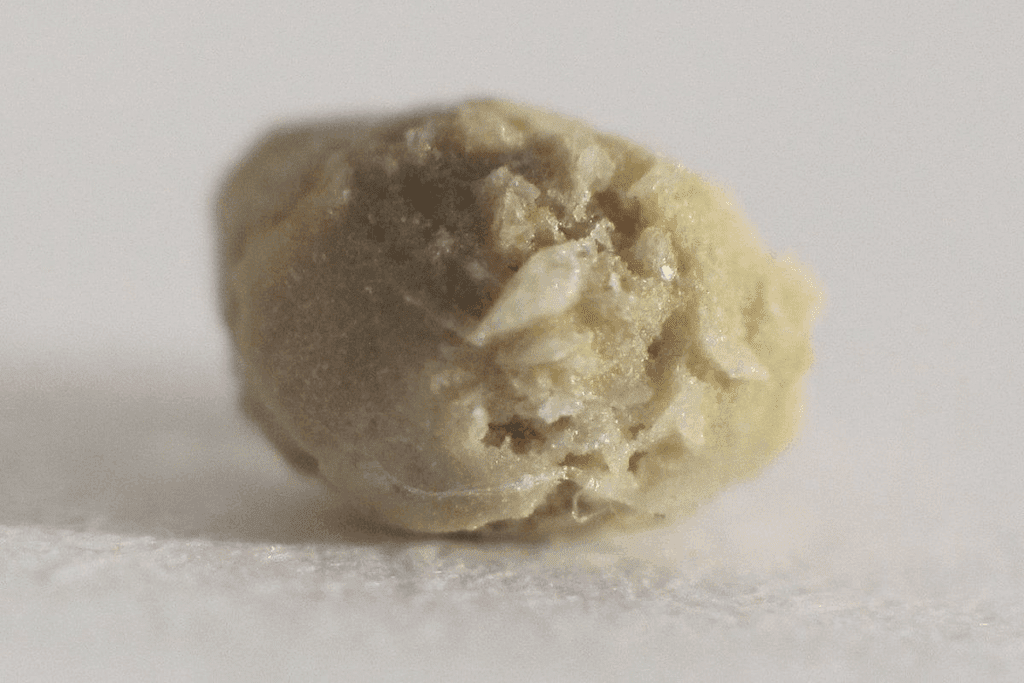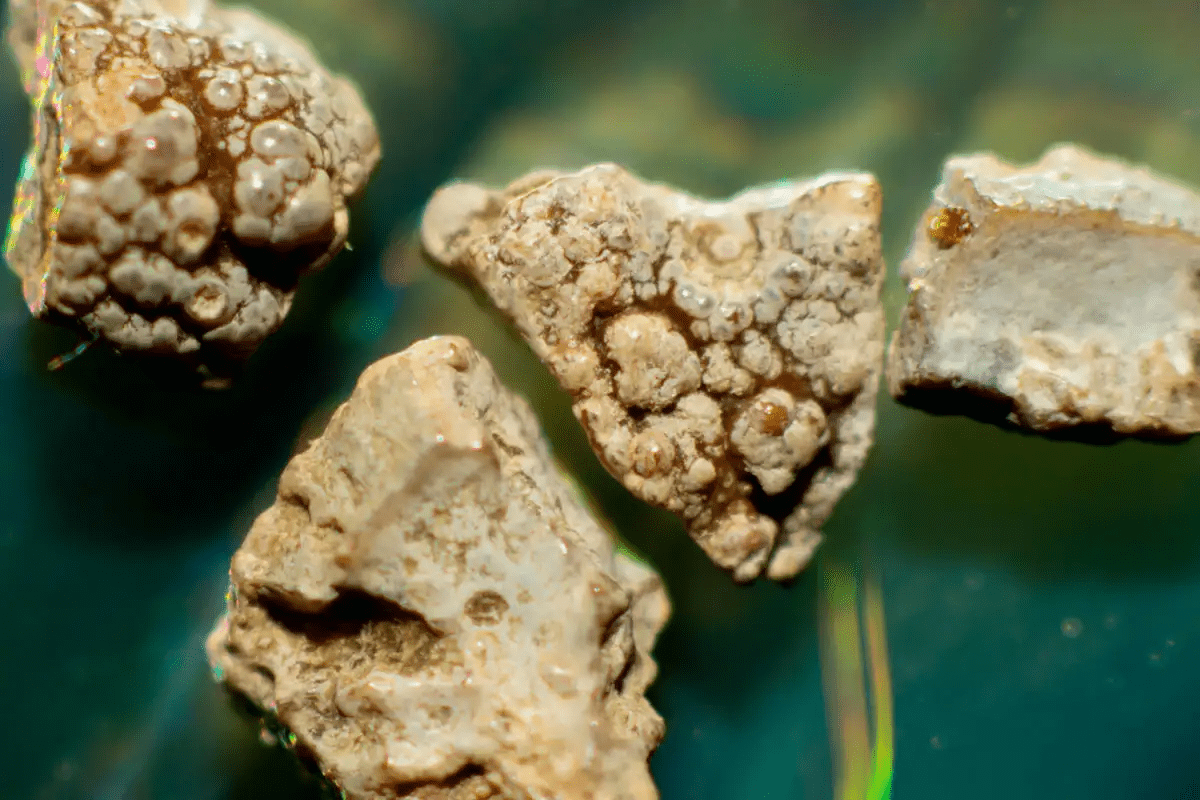
Left ureteral stones are a common issue in the urinary system. They form as hard mineral deposits in the left ureter. This tube connects the left kidney to the bladder.
What does a bladder stone feel like? Learn the specific symptoms and signs of bladder stones in women, including pain and urinary changes.
This condition can cause a lot of pain, nausea, and vomiting. If not treated, it can lead to serious complications.
The urinary tract is a complex system that plays a key role in removing waste and excess fluids. The ureters are a vital part of this system. They connect the kidneys to the bladder.
The ureters are two narrow tubes that carry urine from the kidneys to the bladder. They use peristalsis, a wave-like muscle contraction, to move urine towards the bladder.
It’s essential to understand the urinary tract’s anatomy for diagnosing and treating urinary disorders. Healthcare professionals need a deep knowledge of the urinary tract to provide effective care and treatment.
By knowing the structure and function of the urinary tract, healthcare professionals can diagnose and treat conditions like kidney stones and urinary tract infections. They can also address other disorders related to the urinary system.

A left ureteral stone is a kidney stone found in the ureter. This is the tube that links the kidney to the bladder. It’s a hard buildup of minerals and salts. This can lead to a lot of pain, nausea, and vomiting.
Dehydration, diet, and genetics can cause left ureteral stones. Knowing these factors helps prevent them.
Symptoms include sharp pain in the side and back, nausea, and vomiting. Doctors use X-rays, CT scans, or ultrasounds to find the stone’s size and location.
Treatment varies based on the stone’s size and if it blocks anything. Small stones might go away with more water. But bigger stones might need a procedure like lithotripsy.
The number of people with ureteral stones has gone up. Studies show that about 1 in 11 people in the U.S. will get a kidney stone at some point.
Things like genetics, diet, and lifestyle can raise your risk. Eating a lot of animal protein, sodium, and sugar can lead to stones. Not drinking enough water and some health issues also play a part.
Where you live can affect your chances of getting a ureteral stone. Knowing this helps doctors find better ways to prevent and treat the problem.

Ureteral stones are solid masses that form in the ureters. Their development is influenced by a combination of metabolic, dietary, and other factors.
Metabolic disorders, such as hyperparathyroidism, can increase the risk of developing ureteral stones. Conditions that lead to an excessive amount of calcium in the urine (hypercalciuria) can contribute to stone formation.
Diet plays a big role in the formation of ureteral stones. A diet high in animal protein, sodium, and sugar can increase the risk. On the other hand, a balanced diet rich in fruits, vegetables, and whole grains can help mitigate this risk.
Understanding these factors is essential for preventing the formation of ureteral stones and managing the condition effectively.
Ureteral stones can be classified based on their location within the ureter. The location of a stone is a critical factor in determining the appropriate treatment plan.
Proximal ureteral stones are located near the kidney. They can cause severe pain and potentially damage the kidney if not treated promptly.
Mid-ureteral stones are found in the middle section of the ureter. The treatment approach for these stones depends on various factors, including the size of the stone and the patient’s overall health.
Distal ureteral stones are located near the bladder. The treatment for these stones often involves a combination of medical therapy and close monitoring.
Understanding the location of ureteral stones is key to finding the best treatment. The location can greatly affect the treatment choice and the patient’s outcome.
Knowing the signs and symptoms of ureteral stones is key for quick diagnosis and treatment. These stones can cause a lot of pain and discomfort. The symptoms can affect a person’s daily life in many ways.
Renal colic is a common symptom of ureteral stones. It feels like sharp, severe pain that moves from the back to the groin. This pain happens when the stone moves in the ureter and irritates the wall.
The pain from renal colic can be very intense. It might also make you feel restless, nauseous, and want to vomit. The pain’s pattern can change based on where the stone is in the ureter.
People with ureteral stones may also have urinary symptoms. Hematuria (blood in the urine) is common because the stone irritates the ureter’s lining.
Other symptoms include urgency, frequency, and dysuria (painful urination). These happen if there’s an infection or if the stone blocks the flow.
Systemic symptoms can happen if there’s an infection with the stone. These include fever, chills, and feeling unwell. In serious cases, a blocked stone with infection can lead to urosepsis, a dangerous condition.
The stone’s location in the ureter affects symptoms. Stones in the upper ureter cause more back pain. Stones in the lower ureter cause more pain in the lower abdomen and urinary issues.
Healthcare providers need to know these differences to diagnose and treat correctly.
Diagnosing left ureteral stones involves several steps. These include a thorough clinical evaluation, imaging, and lab tests. By looking at symptoms, medical history, and test results, doctors can create a good treatment plan.
Patients with ureteral stones often get better with non-invasive treatments. These treatments help ease symptoms and help the stone move out. This method works well for smaller stones and can greatly improve how patients feel.
Medical expulsive therapy (MET) uses medicine to help pass the stone. Alpha-blockers are often used because they relax the ureter muscles. This makes it easier for the stone to move out. Research shows MET can speed up stone passage and lower the need for surgery.
Managing pain is key for those with ureteral stones. We suggest using nonsteroidal anti-inflammatory drugs (NSAIDs) and sometimes opioids for bad pain. It’s important to find the right balance between pain relief and avoiding side effects.
Drinking enough water is important for passing the stone. We tell patients to drink lots of water to help flush out the stone. Eating less sodium and avoiding foods high in oxalate can also help.
“Adequate hydration is one of the simplest yet most effective strategies for managing ureteral stones conservatively.”
— Medical Expert, Urologist
Keeping an eye on patients is key when using conservative management. We use follow-up imaging to see how the stone is moving. We also watch for signs of infection or severe pain that might mean we need to try something more.
By using these non-surgical options, we can treat many ureteral stones. This makes patients more comfortable and improves their outcomes.
For many patients, surgery is the best way to treat left ureteral calculus. It helps to ease symptoms when other methods don’t work. Several surgical options are available, each with its own benefits.
Ureteroscopy with laser lithotripsy is a top choice for treating left ureteral stones. A doctor inserts a ureteroscope through the urethra and bladder into the ureter. Then, a laser breaks the stone into smaller pieces that can pass or be removed.
Benefits of ureteroscopy include:
ESWL is a non-invasive treatment that uses shock waves to break up stones. It’s effective for some patients, but success depends on stone size, location, and composition.
“ESWL represents a significant advancement in the treatment of urinary stones, providing a non-invasive alternative to traditional surgical methods.” – Medical Expert, Urologist
Percutaneous nephrolithotomy (PCNL) is used for large or complex stones. It involves a small incision in the back and a nephroscope to remove the stone.
Percutaneous approaches are useful for:
Open surgery is less common today but is used in complex cases. Laparoscopic surgery is a less invasive option. It uses small incisions and a camera to remove stones.
Indications for open or laparoscopic surgery include:
We know surgery is a big decision. Our team is here to provide full care and support. We aim for the best outcomes for our patients.
Untreated ureteral stones can cause serious health problems. One major risk is urinary tract infections (UTIs). These infections can spread to the kidneys, leading to pyelonephritis.
These stones can also lead to chronic pain and discomfort. This can greatly affect a person’s quality of life. The pain can be so severe it interferes with daily activities.
Another risk is kidney damage. The blockage from the stone can harm the kidney tissue. This could lead to chronic kidney disease or even kidney failure.
If symptoms don’t get better or get worse, it’s important to see a doctor. Getting treatment early can prevent these problems and help you feel better.
To stop ureteral stones from coming back, we need to take several steps. First, drinking lots of water is key. Aim for 8-10 glasses a day to keep urine diluted and minerals from forming stones.
Eating a balanced diet is also important. Try to avoid foods high in sodium and oxalates. For some, doctors might suggest taking medicines to prevent stones. By following these tips, you can lower your chance of getting ureteral stones again.
Managing left ureteral stones well needs a full plan. This includes medical care, changes in lifestyle, and teaching patients. Knowing what causes and shows symptoms of this issue is key. It helps people start on the path to a life without stones.
We aim to have shared useful info. This should help you understand and deal with left ureteral stones better.
A left ureteral stone is a small, hard mineral deposit. It forms in the left ureter. This is the tube that carries urine from the left kidney to the bladder.
Symptoms include severe pain in the side and back, below the ribs. Pain can also radiate to the lower abdomen or groin. You might also feel nausea and vomiting.
Imaging tests like X-rays, CT scans, or ultrasound are used. They help find the stone and where it is.
Treatment options include pain management and staying hydrated. In some cases, surgery is needed to remove the stone.
Untreated stones can cause kidney damage and infection. They can even lead to life-threatening conditions like sepsis.
To prevent stones, stay hydrated and eat a healthy diet. Managing any underlying medical conditions is also important.
A left ureteral stone is in the left ureter. A kidney stone can be in the kidney or ureter. The term “kidney stone” is more general.
Yes, small stones might pass on their own. This can happen with pain management and staying hydrated.
Surgery is needed if the stone is large or causes severe symptoms. It’s also necessary if the stone blocks the ureter and could lead to complications.
Ureterolithiasis, National Center for Biotechnology Information – https://www.ncbi.nlm.nih.gov/books/NBK560674/
Subscribe to our e-newsletter to stay informed about the latest innovations in the world of health and exclusive offers!
WhatsApp us